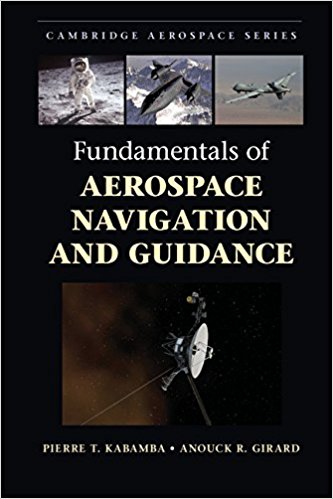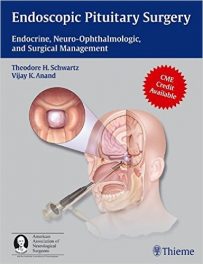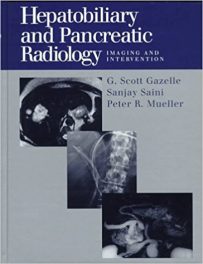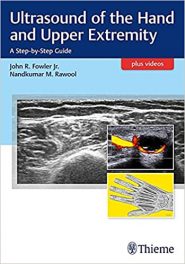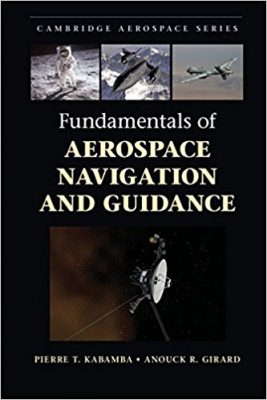 Authors: Peter Kabamba and Anouck Girard
Authors: Peter Kabamba and Anouck Girard
Publisher: Cambridge University Press – 316 pages
Book Review by: Sonu Chandiram
We first provide you a brief context on the authors’ use of words in the title of this book:
Fundamentals refer to a body of knowledge that does not change with advances in technology.
Aerospace vehicles encompass all kinds of craft flying in the atmosphere and in space
Navigation is concerned with the questions such as these and others: Where is the vehicle? What is velocity? And what are its angular orientation and angular rates?
Guidance is concerned with the question: What maneuvers should we perform to cause the vehicle to go where we want, while meeting the specifications of the mission?
Arising out of lecture notes for the graduate-level course AE584 Guidance, Navigation and Avionics initially taught by Professor Emeritus Robert M. Howe in the engineering department of the University of Michigan, and later taught by the authors, this book is useful in the following ways:
- It can be used as the basis of a two-semester-long graduate-level course on aerospace navigation and guidance, with material in the first six chapters for study in the first semester, and material in the subsequent four chapters for the second semester
- It can be used as a reference text
- It can be used by you for self study of this engineering specialty
- It contains numerous examples illustrating concepts
- It provides homework problems at the end of its chapters (a partial solution manual for these problems is available with limited circulation
- It provides for graduate students – with prerequisite undergraduate instruction in differential equations, elementary linear algebra, and flight mechanics – important information in the areas of flight control and dynamics, and guidance and navigation
To give you an overview of what you will find in this book, we list the titles of its 10 chapters:
- Introduction
- Deterministic System Theory
- Stochastic Systems Theory
- Navigation
- Homing Guidance
- Ballistic Guidance
- Midcourse Guidance
- Optimization
- Optional Guidance
- Introduction to Differential Games
- Epilogue
- Appendix: Useful Definitions and Mathematical Results
Essentially, the authors of this book – University of Michigan Professors Peter Kabamba and Anouck Girard – cover the fundamentals of navigation and guidance of present-day aerospace vehicles in both atmospheric and space flight.
Beginning with a discussion of the reasons why navigation and guidance ought to be considered and studied together, they continue by delineating the class of systems used in this aerospace engineering. They then present the fundamentals in deterministic and stochastic systems theory, and apply them to navigation. They consider in particular the following:
- Guidance problems under a variety of assumptions, circumstances and conditions, leading to a variety of:
- Scenarios of ballistic, homing and midcourse guidance
- Optimization and optional control for application in optimal guidance
- Problems in which two competing controls exercise authority over a system, leading to different games
This book points out, and addresses some basic challenges that have arisen since aerospace flights began in the 1960s:
First, aerospace vehicles generally travel much faster and farther than their land sea counterparts
Second, unlike navigation on land and sea that can be based on physical or visible references, an aerospace navigator in many instances does not have such resources. Finally, there is a high level of automation in aerospace craft to minimize crew fatigue or because they are unmanned.
To minimize the risks in human judgment in the operation of such vehicles, engineers have standardized the use of avionic equipment such as digital computers, laser gyroscopes, laser velocimeters, radio transmitters, and other devices..
This is a timely, useful book as aerospace exploration continues to grow rapidly these days.
Authors:
Peter Kabamba is currently professor of aerospace engineering at the University of Michigan. He received a PhD is mechanical engineering from Columbia University in 1981 and joined the University of Michigan in 1983. His area of teaching and research is flight dynamics and control systems. His awards include the Class of 1938 E. Distinguished Service Award from the University of Michigan, a Best Paper Special Award from the Society of Instrumentation and Control Engineers, Japan, and election to the rank of fellow of IEEE. He is coauthors of the textbook Quasilinear Control (Cambridge University Press, 2011)
Anouck Girard is currently associate professor of aerospace engineering at the University f Michigan. She received a PhD in ocean engineering from the University of California, Berkeley, in 2002 and joined the University of Michigan in 2006. Her area of teaching and research is flight dynamics and control systems. Her awards include the Silver Shaft Teaching Award from the University of Michigan and a Best Student Paper Award from the American Society of Mechanical Engineers.

